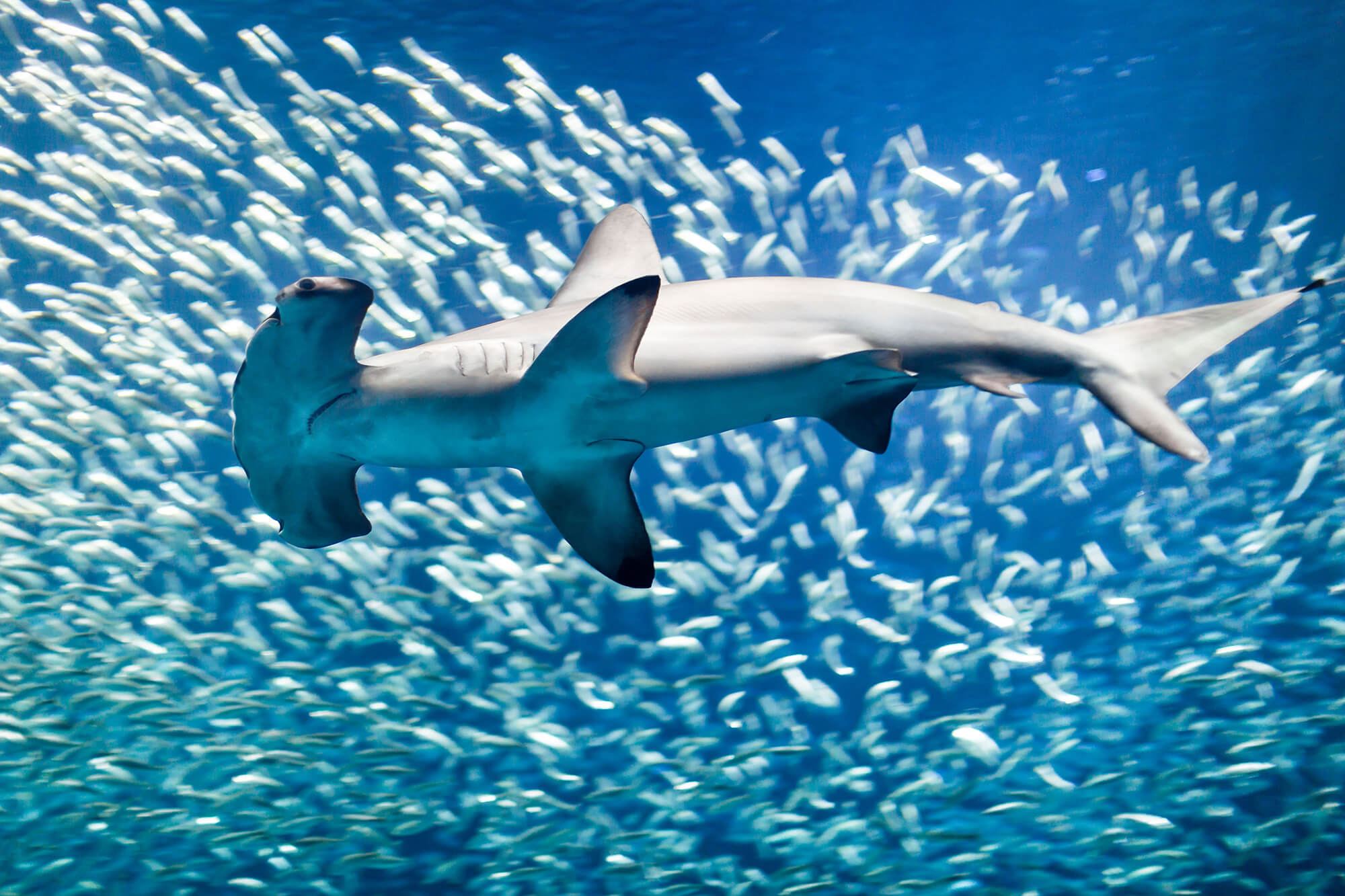


To establish the viability of using this new approach, Dr Coiraton and Dr Amezcua started by testing vertebrae from pregnant females and their embryos. The researchers were able to pinpoint the movement of pregnant females by analysing the composition of the vertebrae of the embryos. Levels of lead complement this information by highlighting polluted areas, usually associated with more coastal environments. The first two are typically analysed as a ratio to indicate the level of salinity: strontium is abundant in deep water with high salinity, whereas barium is present in regions with low salinity. Three chemical elements are key for this approach: strontium (Sr), barium (Ba) and lead (Pb). For the researchers, “this offers great potential to examine questions related to habitat and migration patterns of hammerhead sharks by analysing the vertebral elemental signatures”. They serve as markers to pinpoint the sharks’ movements. In other words, certain chemical elements present in the water are continuously incorporated into the vertebrae as sharks grow. “Recent work suggested that chemical signatures derived from trace elements deposited in the vertebrae of sharks during growth reflect the environmental conditions of the water mass in which they have been exposed”, explain Dr Coiraton and Dr Amezcua. This method has proven a powerful tool to assess the place of birth and migratory patterns in several marine species. The idea is simple: analyse the chemical composition of the sharks’ vertebrae, which should be a reflection of the composition of the water where they lived. Their method of using in-utero vertebral microchemistry has not been tested on sharks before, but Dr Coiraton and Dr Amezcua believe it has great potential to use with these animals.

Physical tagging is undoubtedly the most common way to study animal migrations, but the researchers are keen to try a different approach. Knowing that identifying their movement patterns would be vital for successful conservations efforts, Dr Claire Coiraton and Dr Felipe Amezcua, both based at the National Autonomous University of Mexico, want to shed some light onto these migratory routes.

#Hammer shark full#
It is believed they migrate to deeper waters to find food until they reach full adult size when they eventually return to their original grounds to find a mate. Found along the Mexican coast in the Pacific, young sharks typically live in shallow coastal waters for the first few years of their lives – but what happens after that is still a mystery. They are a reasonably large shark, but still smaller than the great hammerhead. The most recognisable feature of these sharks is the ‘hammer’ on the head, with eyes and nose located at the tips of these extensions. The scalloped hammerhead (Sphyrna lewini) is a species of hammerhead shark. This information is vital to develop appropriate conservation measures to protect this endangered species. It turns out that not all sharks follow the same pattern of movements, with some preferring to stay in coastal areas while others opt for deeper waters. Using a new method to study migratory routes of scalloped hammerhead sharks, Dr Claire Coiraton and Dr Felipe Amezcua, based at the National Autonomous University of Mexico, identified a more complex picture than previously thought.


 0 kommentar(er)
0 kommentar(er)
